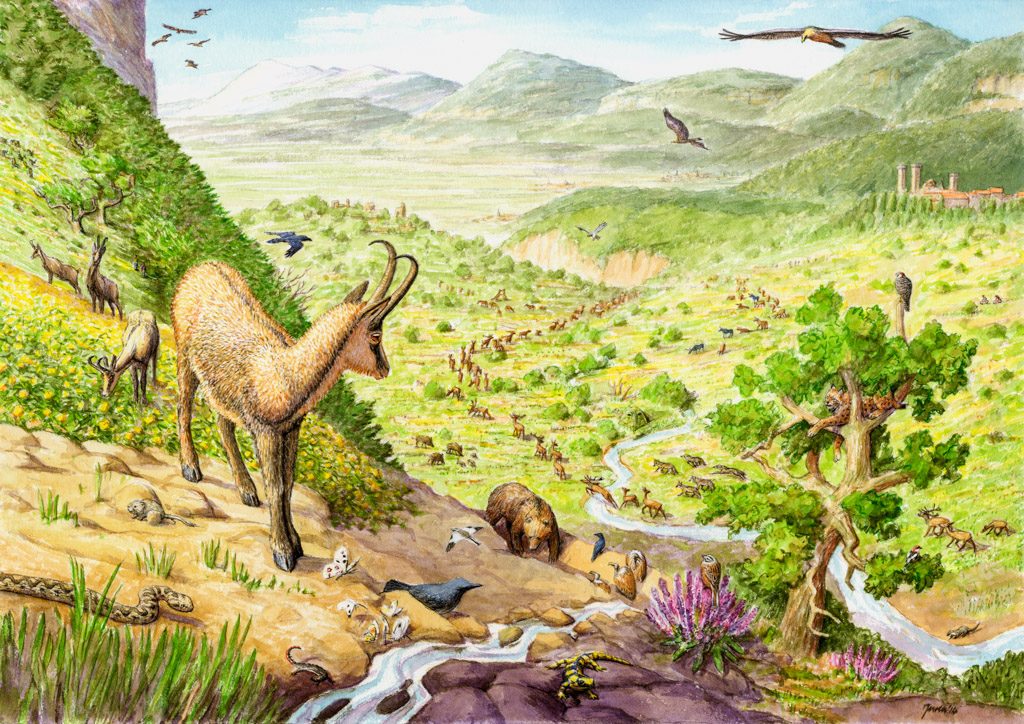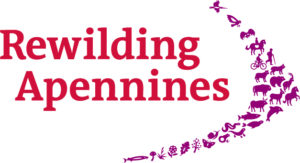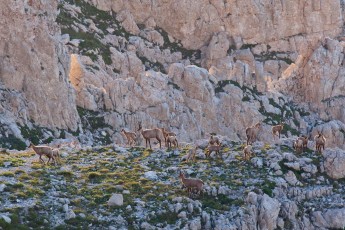
Apennine chamois herd of females and kids on altitude plateau of the Majella Massif on summer evening
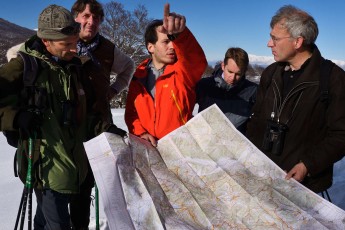
Planning work and discussions around the map, Deli Saavedra, Wiet de Bruijn, Umberto Esposito, Ilko Bosman and Wouter Helmer
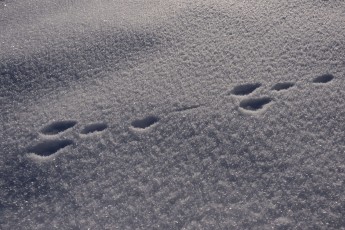
Tracks of European hare
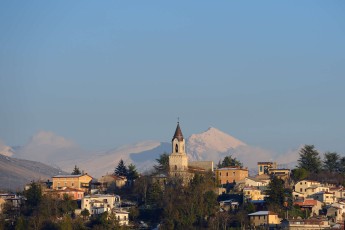
Central Apennines
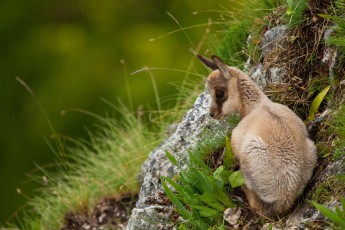
Apennine chamois
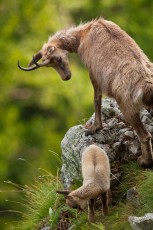
Apennine chamois female watching over kid/juvenile in spring
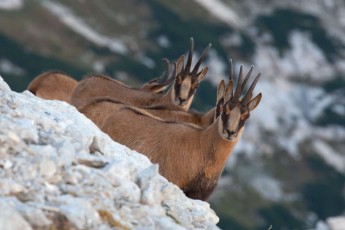
Apennine chamois adult males in early autumn
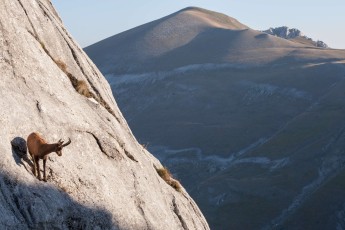
Apennine chamois male moving on extremely steep and smooth rock wall. Endemic to the Apennine mountains
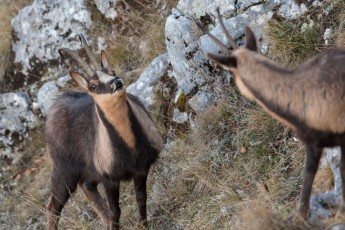
Apennine chamois adult male flehmen / lip-curling during autumn rut
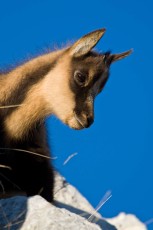
Apennine chamois kid/juvenile in autumn
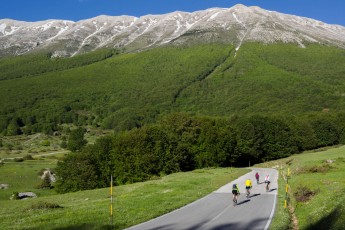
Cyclists on a spring afternoon on mountain road in Majella National Park
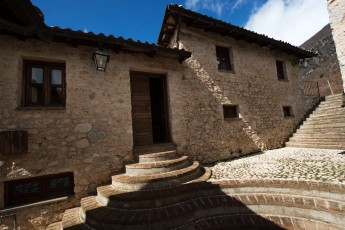
Houses under renovation to become wonderful nature tourism B&B
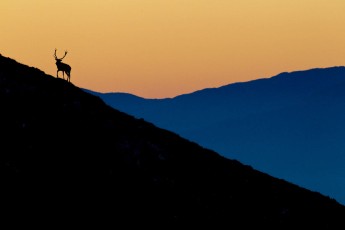
Red deer stag on mountain slope at sunrise
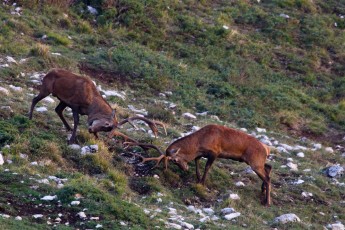
Red deer stags fighting during the autumnal rut
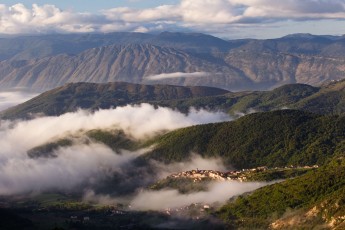
Apennine village of Rosciolo dei Marsi in western Abruzzo
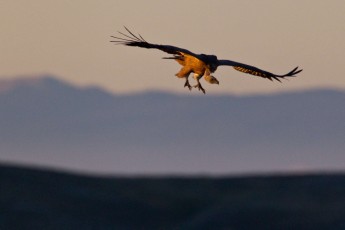
Griffon vultures landing at sunrise
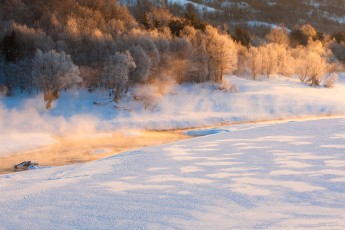
Steam rising from a stream on frosty winter morning in the Abruzzo National Park
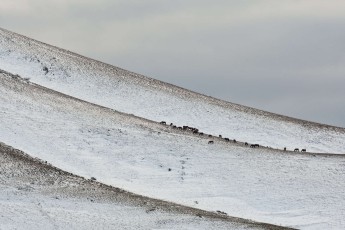
Herd of semi-feral horses grazing on snowy mountain slope in the Central Apennines
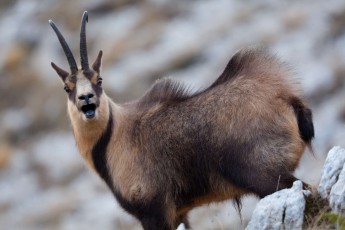
Apennine chamois adult male grunting in autumn during the rut
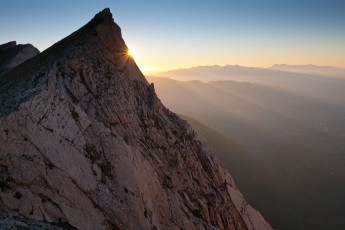
Last sunrays on northern slope of Mount Camicia in the Gran Sasso Massif in the Gran Sasso National Park
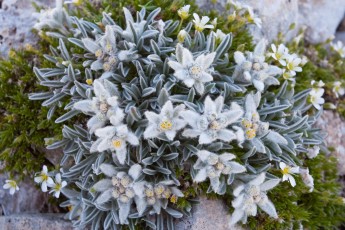
Apennine edelweiss blooming. Endemic to high altitudes in the Central Apennines
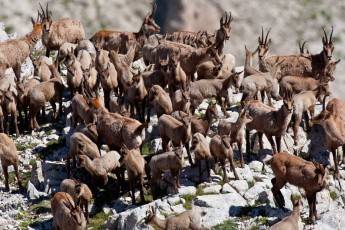
Very large herd of Apennine chamois adult females and kids/juveniles gathering on mountain ledge in summer
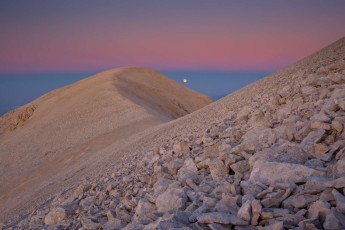
Full-moon and sunset colors on summit of Mount Acquaviva (2707 m), second highest peak in the Majella massif in the Majella National Park
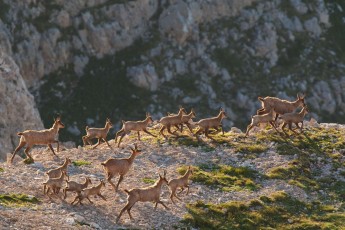
The new monitoring framework will help catalyse positive and ambitious visions for rewilding in European landscapes.
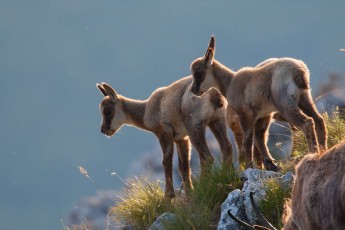
Apennine chamois kids/juvenile in late spring
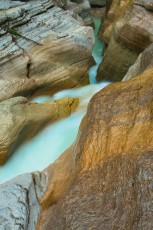
The waters of river Orta carve their way through lymestone shores in the homonymous valley in Majella National Park
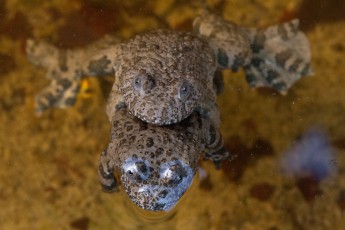
Apennine yellow-bellied toad pair mating in mountain stream. Endemic of Apennines
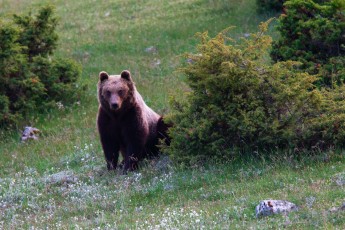
Marsican / Abruzzo brown bear adult in spring mountain meadow
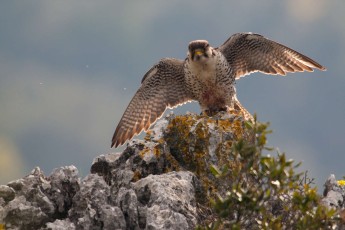
Lanner falcon adult male landing on perch
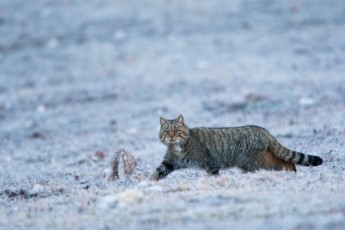
Wildcat adult male crossing a frosty meadow
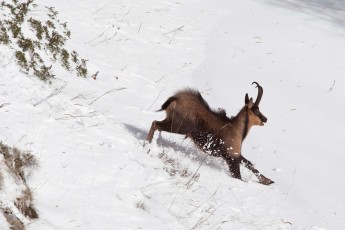
Apennine chamois adult male running in snow
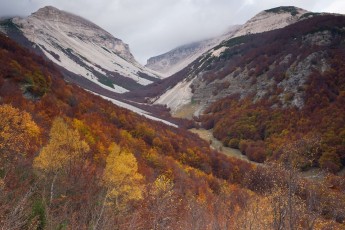
Autumnal foliage colors in the Macchialung valley in eastern Majella
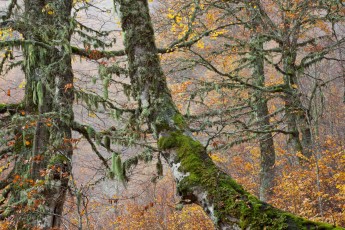
Autumn colors in an old beech forest in the Abruzzo National Park
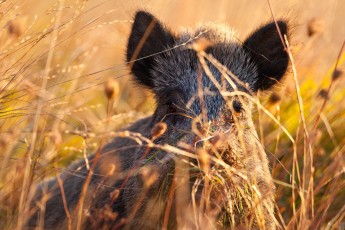
Wild boar portrait in tall grass on autumn morning

Apennine chamois adult males silhouette, endemic to the Apennine mountains
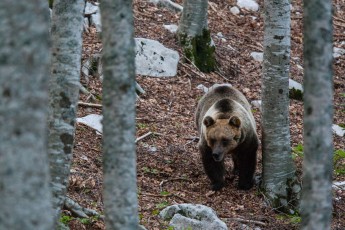
Marsican / Abruzzo brown bear adult female in beechwood. Critically endangered subspecies
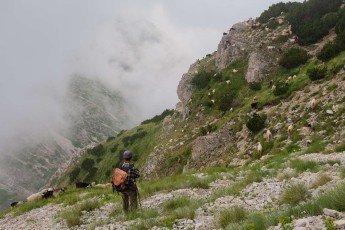
Abruzzo shepherd warding his flock of sheep and goats grazing on steep mountain slope in the Majella National Park
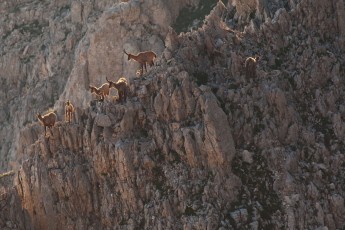
Apennine chamois females and kids/juveniles in summer at rest on rocky slope
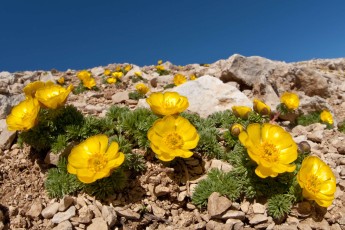
Apennine pheasant 's eye (Adonis distorta) on mountain summit, endemic and endangered species of the Apennines
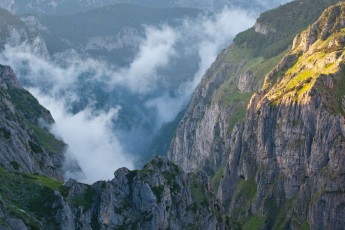
Afternoon light on "Inferno" gorge in eastern Majella
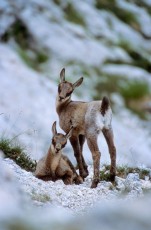
Endangered endemic Apennines/Abruzzo chamois, a few weeks old
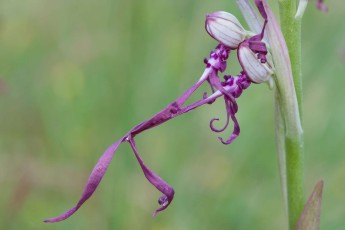
The lizard orchid, detail of the labellum
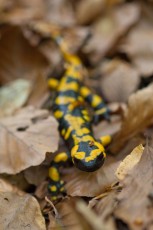
Apennine fire salamander on forest floor. Endemism of the Apennines

Coetaneous beech forest after snowfall

The steep northern slope of Mount Sirente covered in snow, Sirente-Velino Regional Park
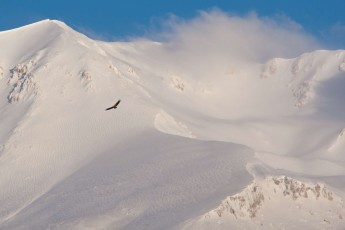
Griffon vulture soaring above snowy peak of Mount Velino
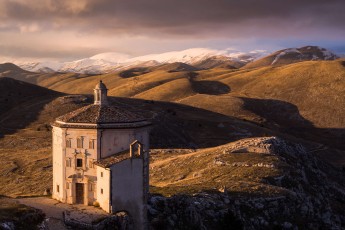
Octagonal church of S. Maria della Pietà in Calascio with mountains of Gran Sasso National Park

Scattered clouds and afternoon light on Mount Velino massif, which is the second highest in the Apennines
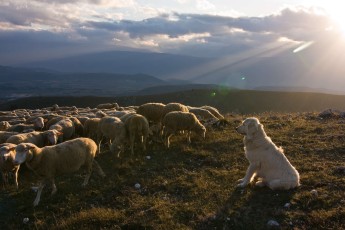
An Abruzzese mastiff, traditional breed of shepherd dogs, guarding a flock of sheep in Gran Sasso National Park
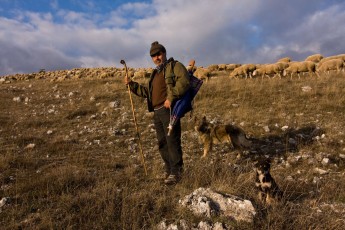
Abruzzo shepherd Ruggero Damiani guarding his flock of sheep together with two of his dogs in Gran Sasso National Park
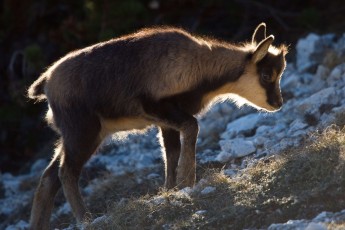
Apennine chamois kid/juvenile in autumn. Endemic to the Apennine mountains
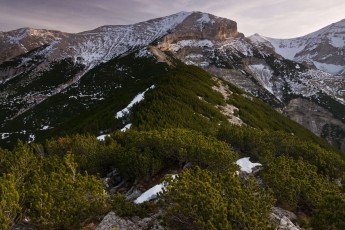
Sunset on Mount Focalone on Majella's main ridge
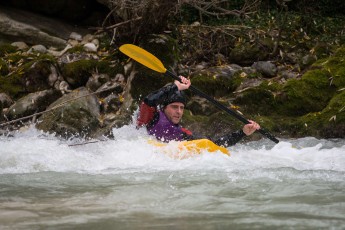
Kayaking in a stream of the Majella National Park
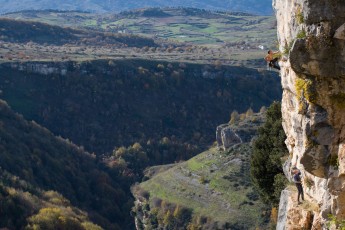
Climber on cliff in the Majella National Park
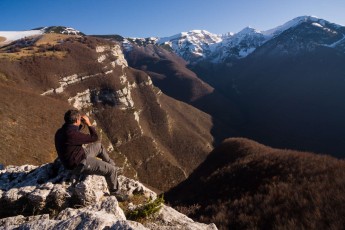
Wildlife watching in the Orfento valley in the Majella National Park

Hiker on Majella's altitude plateau at sunset

Sunrise light on Taranta valley in eastern Majella
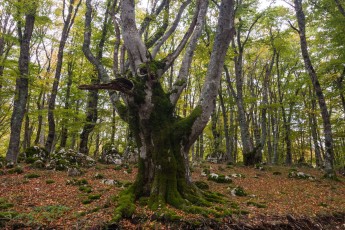
Large beech tree in the "Bosco di San Antonio" in the Majella National Park
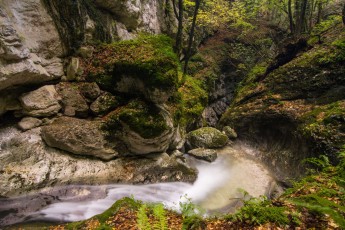
The Orfento river in the homonymous valley in the Majella National Park
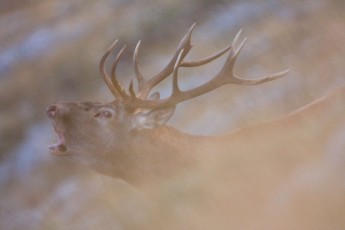
Red deer stag bellowing during the rut season
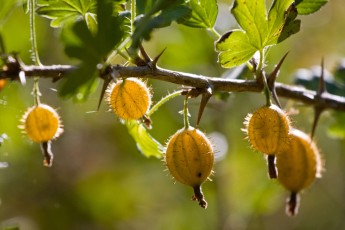
Gooseberry in backlight

White-winged snowfinch on snow
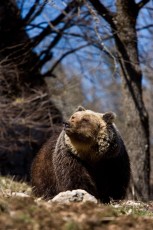
Adult female Marsican / Abruzzo brown bear, critically endangered subspecies
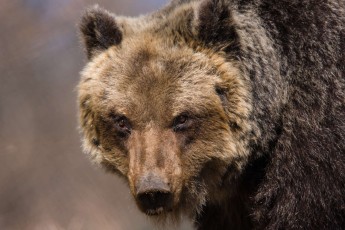
Adult female Marsican / Abruzzo brown bear, critically endangered subspecies
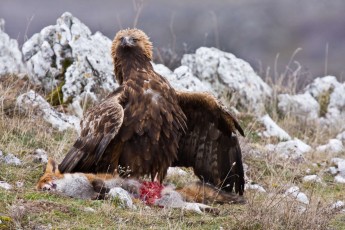
Golden eagle scavening on red fox carcass
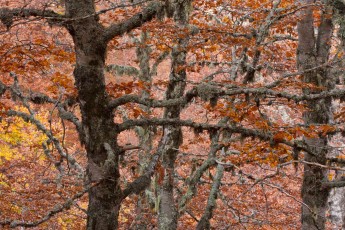
Details of hundreds-year-old beech forest in the Abruzzo National Park
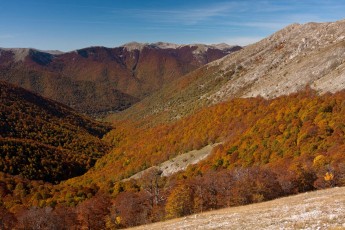
Autumn colors on mountains and forests in the Abruzzo National Park at sunrise
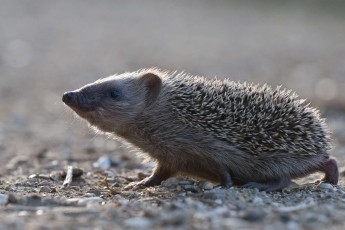
Young hedgehog in backlight
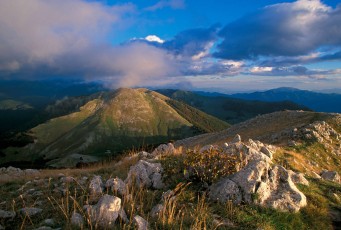
Central Apennines rewilding area, Abruzzo, Italy.
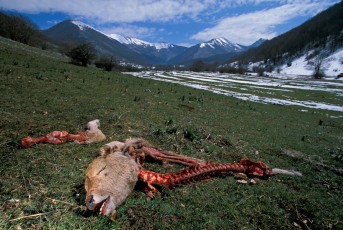
Remains of a domestic cow calf eaten by a Marsican / Abruzzo brown bear in Abruzzo National Park, Central Apennines

Lily of the valley. Rare cold ages relict in Central Apennines
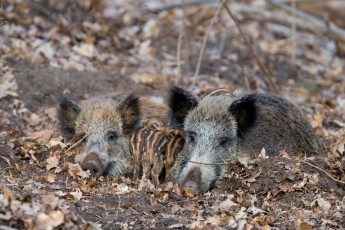
Wild boar females with piglets at rest in forest
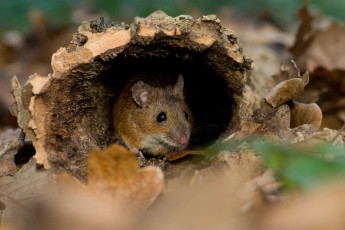
Wood mouse in hollow cork oak trunk
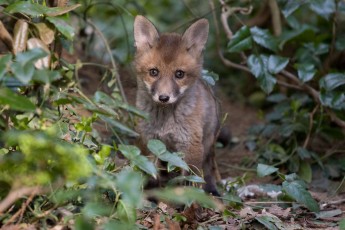
Red fox pup near den site
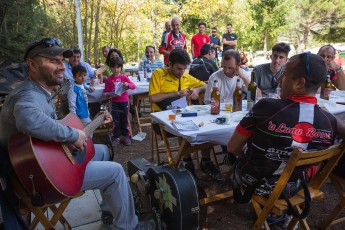
The presence of volunteers provides economic support to the villages where they are based. Image: Bruno D'Amicis / Rewilding Europe
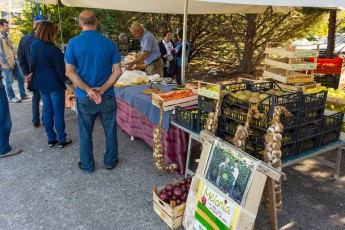
Moments of Milonia, apple and bear fest in Ortona dei Marsi, October 2014. Event supported by Rewilding Apennines.
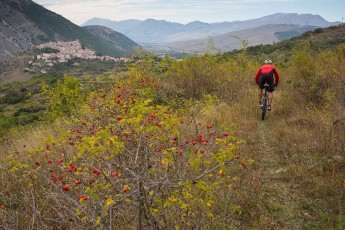
Mountain biking near Ortona dei Marsi in the Giovenco Valley of the Abruzzo, Lazio and Molise National Park and Rewilding area. Abruzzo, Italy. Sep 2014
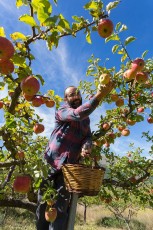
Apple farmer Franco Maggi from Ortona dei Marsi collecting typical apple varieties from the Giovenco Valley of the Abruzzo, Lazio and Molise National Park and Rewilding area. Abruzzo, Italy. Sep 2014
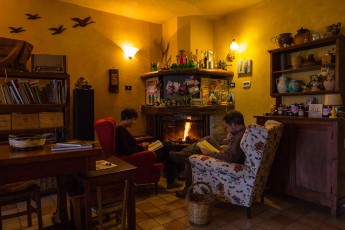
Bed & Breakfast "Briciole di..." of Rosciolo dei Marsi (AQ) at the foothills of Mount Velino in the Sirente-Velino Regional Park. Abruzzo, Italy. Sep 2014
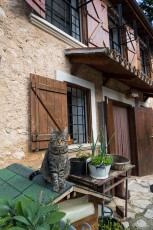
Bed & Breakfast "Briciole di..." of Rosciolo dei Marsi (AQ) at the foothills of Mount Velino in the Sirente-Velino Regional Park. Abruzzo, Italy. Sep 2014
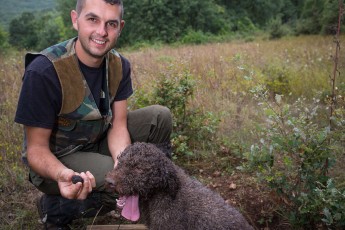
Bear advocate Matteo Simonicca from Lecce nei Marsi collecting truffles with his special bred "Lagotto" dog. Central Apennines, Abruzzo, Italy. Sep 2014
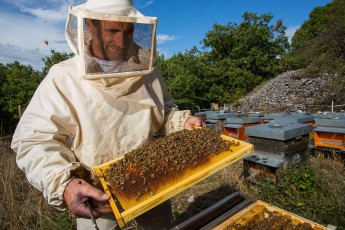
Electric fence installation will benefit owners of small businesses (such as apiaries) and thereby promote human-bear coexistence. Image: Bruno D'Amicis / Rewilding Europe
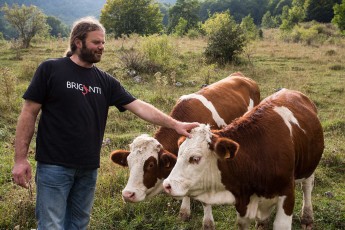
Cattle farmer Claudio Di Domenico of the organic farm "La Grancia di San Domenico" in Villetta Barrea. Abruzzo, Lazio and Molise NP. Abruzzo, Italy. Sep 2014
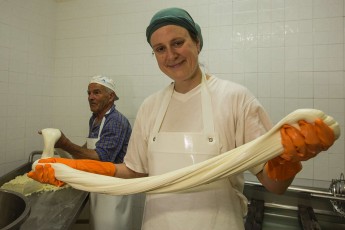
Cheese making in the organic farm "La Grancia di San Domenico" in Villetta Barrea. Abruzzo, Lazio and Molise NP. Abruzzo, Italy. Sep 2014
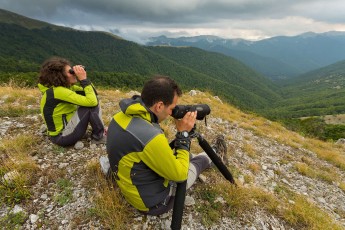
Umberto Esposito, mountain guide and CEO at Wildlife Adventures, leading a bear-watching excursion in Central Apennines rewilding area, Italy.
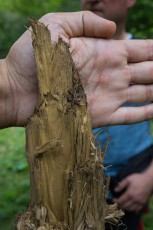
Umberto Esposito, mountain guide and CEO at Wildlife Adventures, partner of Rewilding Europe in the Apennines, showing bear rub-tree while leading a group for a bearwatching excursion. Abruzzo, Lazio and Molise National Park. Central Apennines, Abruzzo, Italy. Aug 2014
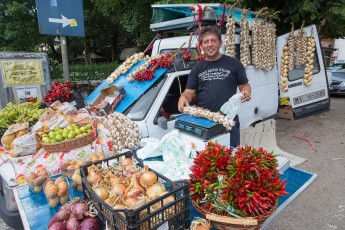
Street vendor of vegetables, peppers and local "red" garlic in Pescasseroli. Central Apennines, Abruzzo, Italy. Aug 2014

Preparation of traditional Parrozzo/Pan dell'Orso (Bear's bread) cake with chocolate and almonds made by Piero Testa in "Delizia degli Elfi" bakery in Pescasseroli. Central Apennines, Abruzzo, Italy. Aug 2014
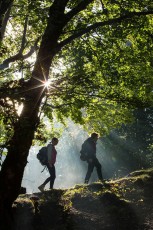
Young women hiking in the morning in old beechwood near Pescasseroli. Abruzzo, Lazio and Molise National Park. Abruzzo, Italy. August 2014
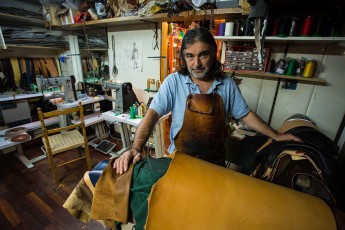
Leather artisan Francesco Paglia, in his atelier/shop "A q'riul" in Pescasseroli. Central Apennines, Abruzzo, Italy. Aug 2014
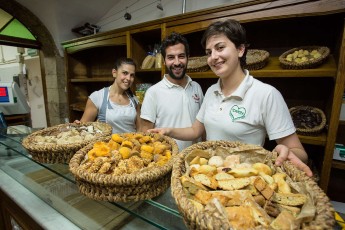
Employees showing bakery products of the "Vecchio Forno Pinocchio" in Pescasseroli. Central Apennines, Abruzzo, Italy. Aug 2014
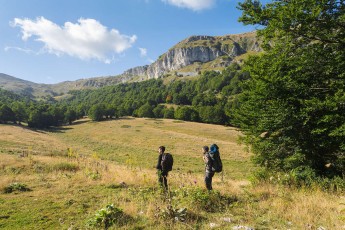
Hiker couple in Duchessa Mountains Nature Reserve. Lazio, Italy. August 2014

Wild raspberry (Rubus idaeus) in forest meadow. Central Apennines, August 2014
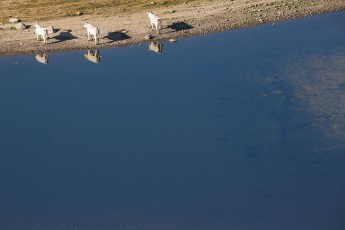
Cattle on the shores of the Duchessa Lake in Duchessa Mountains Nature Reserve. Lazio, Italy. August 2014
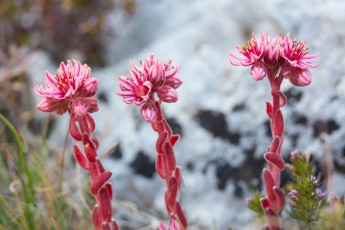
Sempervivum arachnoideum, sometimes known as cobweb houseleek in Duchessa Mountains Nature Reserve. Lazio, Italy. August 2014
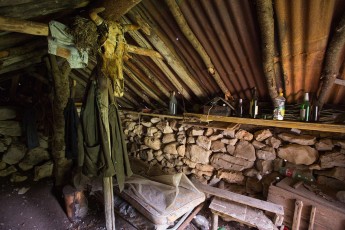
Shepherd hut in Duchessa Mountains Nature Reserve. Lazio, Italy. August 2014
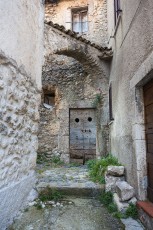
Detail of medieval village of Ortona dei Marsi. Central Apennines, Abruzzo, Italy. July 2014
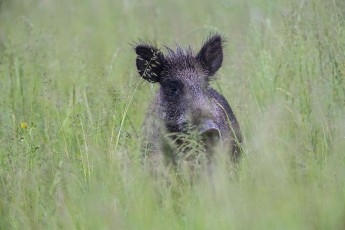
Wild boar (Sus scropha) portrait in meadow. Central Apennines, Abruzzo, Italy. June 2014
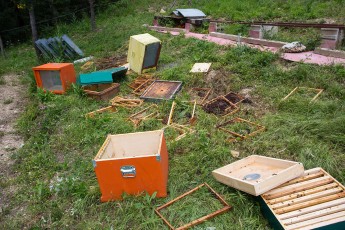
Bear damage to beehives. Central Apennines, Abruzzo, Italy. 2014
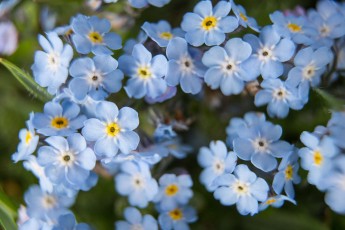
Apennine forget-me-not (Myosotis ambygens). Abruzzo, Italy. June 2014
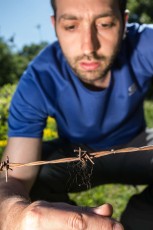
Bear advocate Fabrizio Di Salvatore examinating wire along fence for brown bear hairs. Abruzzo, Italy. June 2014
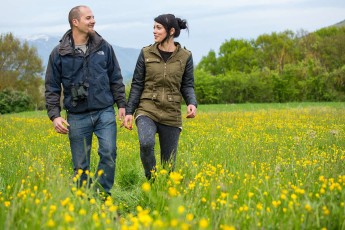
Young couple walking through a flowering field. Piani Palentini, Scurcola Marsicana, Abruzzo, Italy. May 2014
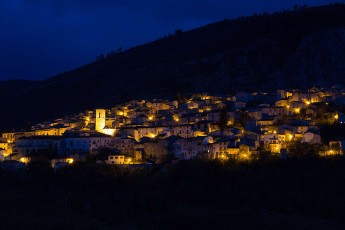
Nocturnal view of the medieval village of Ortona dei Marsi in the Abruzzo, Lazio and Molise NP. Abruzzo, Italy. May 2014
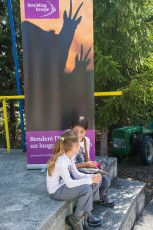
Moments of Milonia, apple and bear fest in Ortona dei Marsi, October 2014. Event supported by Rewilding Apennines.

